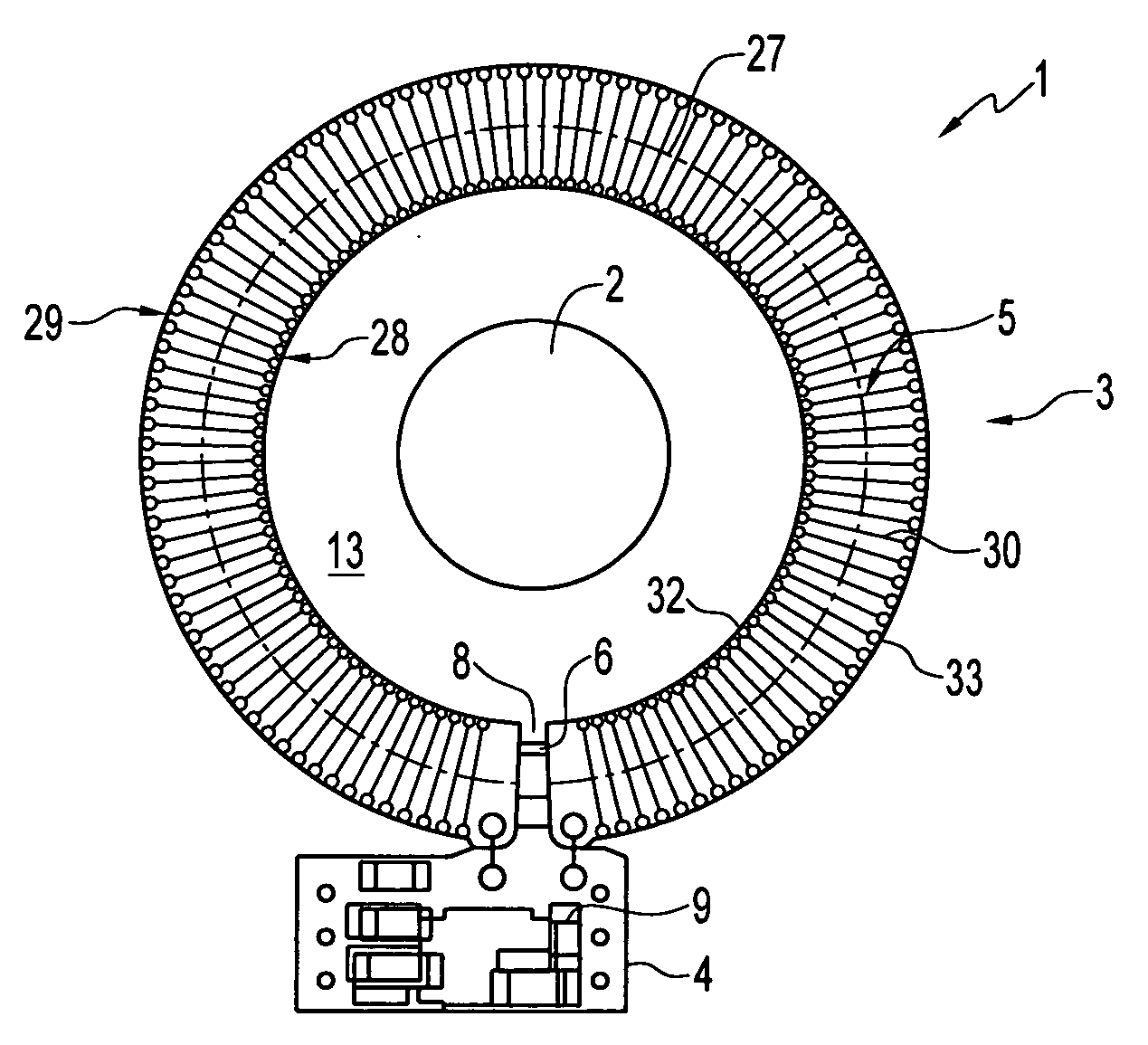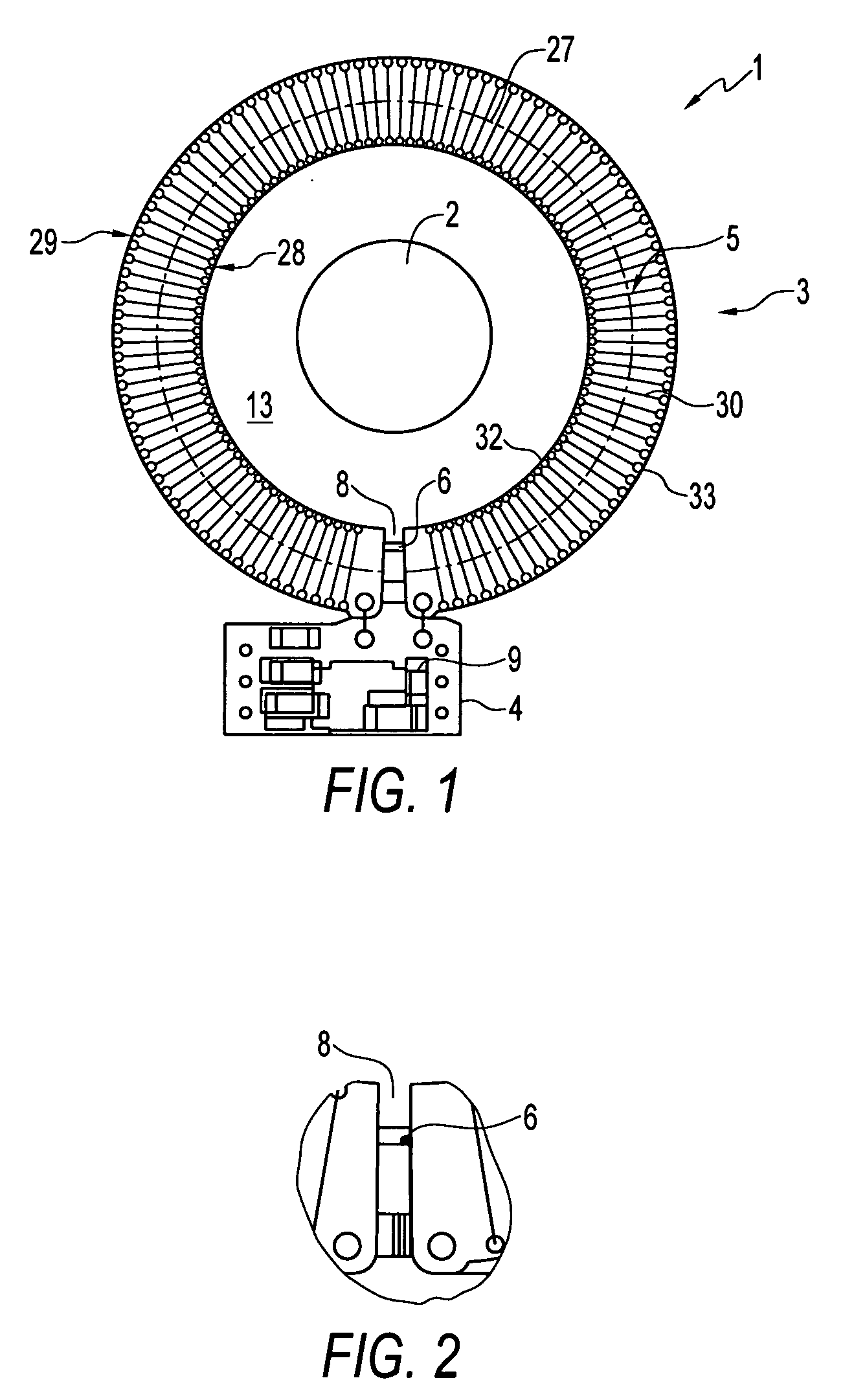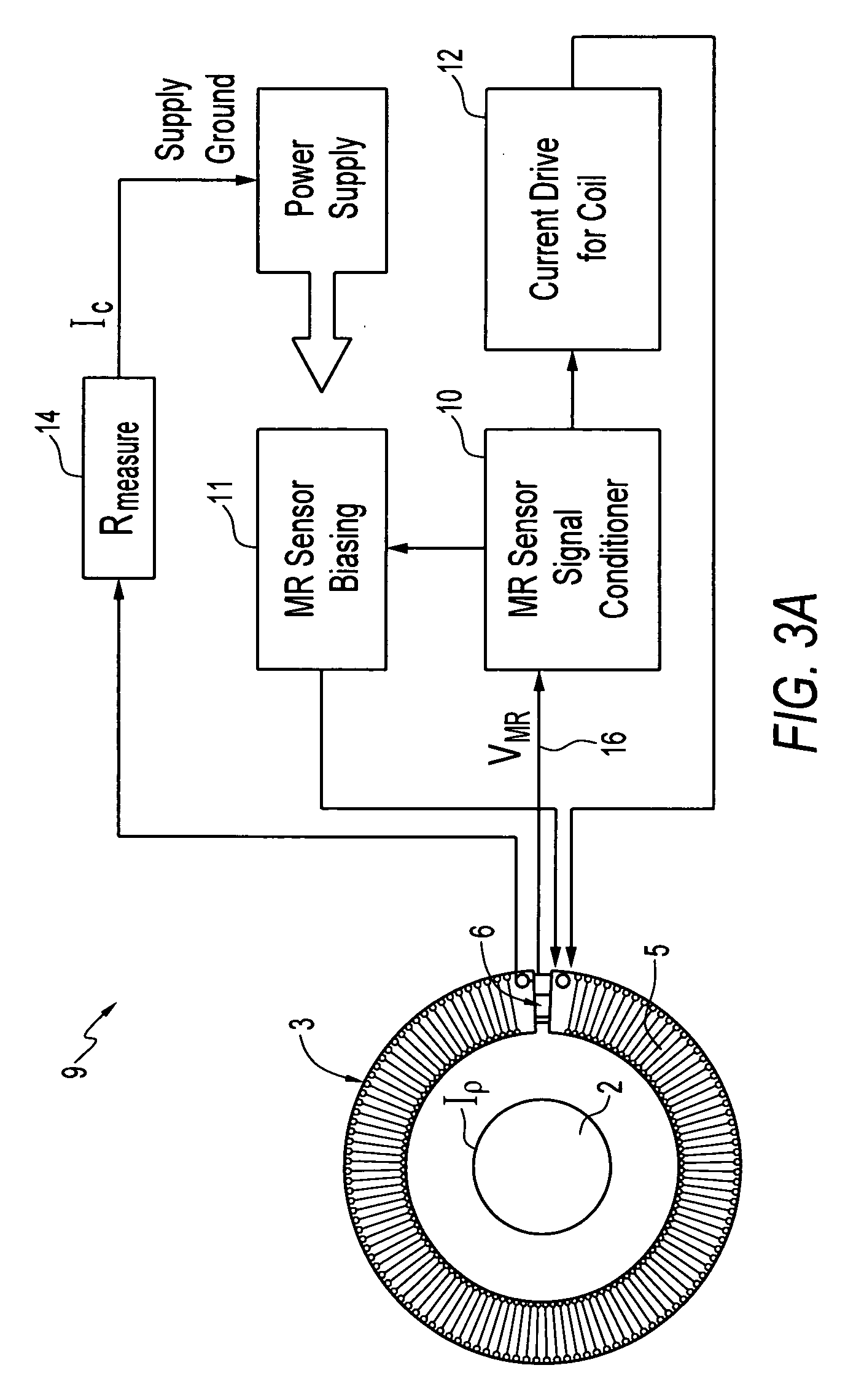Closed-loop magnetic sensor system
a closed-loop, magnetic sensor technology, applied in the field of sensors, can solve the problems of significant amplitude and temperature dependence, permanent remanence, and the inability to operate continuously, so as to reduce offset current, improve operating characteristics, and reduce cost
- Summary
- Abstract
- Description
- Claims
- Application Information
AI Technical Summary
Benefits of technology
Problems solved by technology
Method used
Image
Examples
Embodiment Construction
[0041] Referring to FIG. 1 of the accompanying drawings, which illustrates a plan view of the closed loop magnetic sensor system according to a preferred embodiment, the magnetic sensor system 1 has a magnetic sensor 6 for sensing an input magnetic field generated by a magnetic source 2, and a compensating current carrying conductor 5, magnetically coupled to the magnetic sensor 6, for generating a compensating magnetic field at the magnetic field sensor.
[0042] As will be described in more detail below, the compensating conductor 5 is arranged as a series of coils embedded in a dielectric medium. Arranging the compensating conductor 5 in or on a dielectric medium advantageously increases the Galvanic isolation between the compensating conductor 5 and the magnetic source 2, thereby increasing the breakdown voltage between the magnetic source 2 and compensating conductor 5, and enabling the magnetic senor 6 to sense the input magnetic field with a high sensitivity without requiring t...
PUM
| Property | Measurement | Unit |
|---|---|---|
| magnetic field | aaaaa | aaaaa |
| conductive | aaaaa | aaaaa |
| magnetic flux | aaaaa | aaaaa |
Abstract
Description
Claims
Application Information
 Login to View More
Login to View More - R&D
- Intellectual Property
- Life Sciences
- Materials
- Tech Scout
- Unparalleled Data Quality
- Higher Quality Content
- 60% Fewer Hallucinations
Browse by: Latest US Patents, China's latest patents, Technical Efficacy Thesaurus, Application Domain, Technology Topic, Popular Technical Reports.
© 2025 PatSnap. All rights reserved.Legal|Privacy policy|Modern Slavery Act Transparency Statement|Sitemap|About US| Contact US: help@patsnap.com



